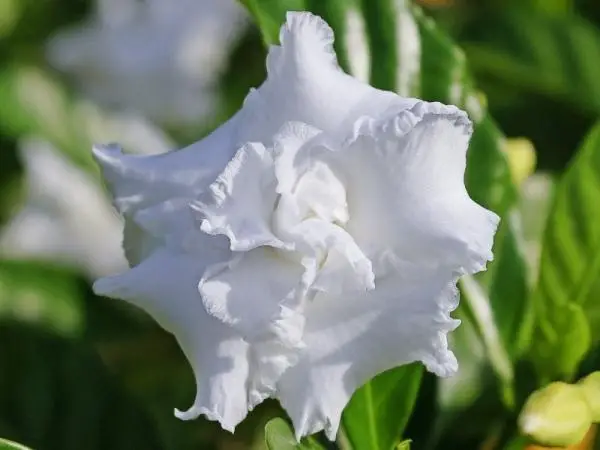Gardenia is a plant native to China that belongs to the Rubiaceae family. It has more than 100 different species, which are highly appreciated in the world of gardening thanks to their beautiful and fragrant flowers.
However, gardenia is also known for not being an easy plant to care for. If you plan to get one of these beautiful plants for your home, do not be intimidated by the difficulties and join us in this article, in which we will see what are the main gardenia care .
Gardenia characteristics
We are talking about an evergreen shrub with an intense and bright green color, which does not grow beyond an approximate meter if planted in a pot, but which can reach greater dimensions in the ground or soil.
During the end of spring, it produces flowers similar to those of roses , with white tones, very aesthetic and with an intense and pleasant smell. There are many varieties of this species, specifically more than 100 varieties , so not all the flowers are very similar to roses, but generally they are white and aromatic. Next, we discuss all the basic care of gardenias at home.

I usually
The most important requirement of gardenia, and therefore the first one that we are going to talk about, is that it is an acidophilus plant . This means that it needs soils with a more acidic pH than usual, in this case around 5. If the plant does not have a substrate or soil with adequate acidity, its leaves will begin to yellow and the plant will end dying, so this is a prerequisite.
There are specialized shops that sell acidic substrates for acidophilic plants, such as heather soil, chestnut soil or blond peat. In addition, the gardenia will appreciate that the soil is rich in organic matter, so some compost in the mixture is highly recommended. Finally, the soil or substrate must offer good drainage .

Location
This plant can be planted both indoors and outdoors. Indoors, we recommend placing it in a location near a window or source of natural light , while outdoors it is appropriate to find a semi – shady area . Keep in mind that it is a tropical plant, so frost will kill it if you plant it in the garden in cold weather.
Watering the gardenias
Gardenia requires constant but not excessive watering . Water it when the substrate starts to get too dry, but don’t water it or it could be attacked by fungi. The most important thing here is the water used: if you irrigate with tap water and your area is rich in lime, this would alter the acidic pH of your substrate or soil. Therefore, use bottled soft water or even distilled water. If you don’t have access to any of these things, you can add a few drops of vinegar or lemon juice to it to make it more acidic.

Compost for gardenias
In spring and summer you can fertilize your gardenia once a month to enhance its growth and flowering. Use compost for acidophilic plants.
Prune a gardenia
In this aspect, the gardenia appreciates a maintenance pruning a year in winter, in which you clean it of those leaves and branches in poor condition. You can also take advantage of it to eliminate branches that intersect with others or that are growing in unwanted directions.
Just after its summer blooming season, it can be clipped to allow the plant to bloom again in the fall.
When gardenias bloom and how to make them bloom
As we just explained, gardenias produce their pretty, scented flowers between late spring and summer . However, if you apply a pinch pruning after the main bloom, you can get it to return to flowering in the fall, especially in warmer climates.
If despite this your gardenia does not produce a good flowering, it is probably because some of the aspects of its care are not being taken care of correctly. If you have respected all the points of gardenia care explained above and you live in a very warm area, your plant may need you to spray some water on its leaves on the hottest days, even if you do so with a very fine spray. to avoid that these are covered with fungus.

Gardenia pests and diseases
There are two main problems that gardenia tends to face. These are the pests, diseases and conditions of gardenias that are most frequent:
- The first occurs when the gardenia leaves are yellow because the plant is not in a soil acid enough for it. As an emergency measure if this happens to you, you can apply fertilizer to the plant in the form of a chelate, which will help it while you solve the problem of acidifying the soil. Keep in mind that this is only a temporary solution and in no way does it replace the need for an acidic soil.
- The second is excess moisture , which causes the plant to be attacked by fungi. Don’t overwater your gardenia, and only do so when the substrate is dry.
- On the other hand, it is also common for this plant to be attacked by aphids, scale insects or spider mites , pests that are easily controlled with potassium soap sprayed on the plant.
